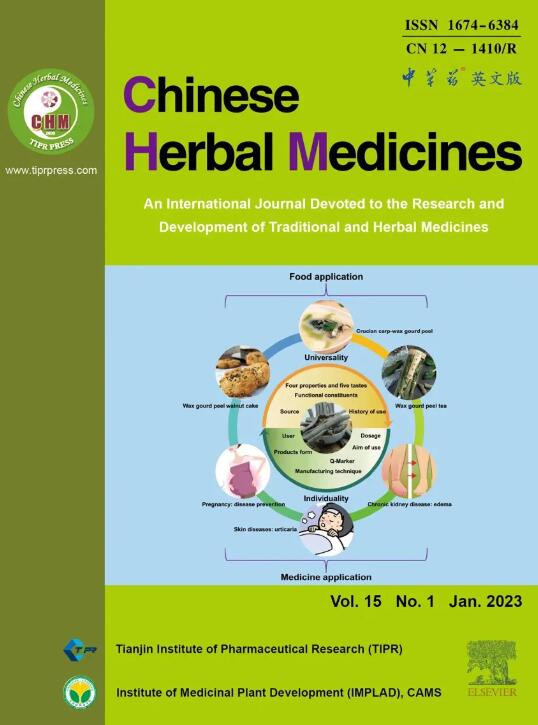Research progress on chemical diversity of saponins in Panax ginseng
IF 8.9
4区 医学
Q1 CHEMISTRY, MEDICINAL
引用次数: 0
Abstract
Saponins, the major bioactive components of Panax ginseng C. A. Mey., are gradually emerging as research hotspots owing to the possession of various pharmacological activities. This review updates the ginsenosides list from P. ginseng and the steam-processed ginseng (red ginseng and black ginseng) up to 271 by June of 2024, encompassing 243 saponins from different parts of P. ginseng (roots, stems, leaves, flowers, berries, and seeds), 103 from red ginseng, and 65 from black ginseng, respectively. Among 271 saponins, there are a total of 249 (1–249) dammarane type (with a–z subtypes) tetracyclic triterpene saponins reported from each part of P. ginseng and steam-processed ginseng, two (250–251) lanostane type tetracyclic triterpene saponins identified from red ginseng, 18 (252–269) oleanane type pentacyclic triterpenoid saponins discovered from each part of P. ginseng and steam-processed ginseng, and two (270–271) ursane type pentacyclic triterpenoid saponins reported from red ginseng. Overall, this review expounds on the chemical diversity of ginsenosides in various aspects, such as chemical structure, spatial distribution and subtype comparison, processed products, and transformation. This facilitates more in-depth research on ginsenosides and contributes to the future development of ginseng.
三七皂苷化学多样性的研究进展
人参皂苷作为人参的主要生物活性成分,因具有多种药理活性而逐渐成为研究热点。本综述更新了人参和蒸汽加工人参(红参和黑参)的人参皂苷列表,到 2024 年 6 月,人参和蒸汽加工人参(红参和黑参)的人参皂苷列表已增至 271 种,包括人参不同部位(根、茎、叶、花、浆果和种子)的 243 种皂苷、红参的 103 种皂苷、黑参的 65 种皂苷。在 271 种皂甙中,人参各部位和蒸煮人参的四环三萜皂甙共有 249 种(1-249 种)达玛烷型(含 a-z 亚型)。从人参的各个部位和蒸汽加工的人参中发现了 18 种(252-269)齐墩果烷型五环三萜皂甙,从红参中发现了 2 种(250-251)羊毛甾烷型四环三萜皂甙,从人参的各个部位和蒸汽加工的人参中发现了 18 种(252-269)齐墩果烷型五环三萜皂甙,从红参中发现了 2 种(270-271)乌苏烷型五环三萜皂甙。总之,本综述从化学结构、空间分布和亚型比较、加工产品和转化等多个方面阐述了人参皂苷的化学多样性。这有助于对人参皂苷进行更深入的研究,并为人参的未来发展做出贡献。
本文章由计算机程序翻译,如有差异,请以英文原文为准。
求助全文
约1分钟内获得全文
求助全文
来源期刊

Chinese Herbal Medicines
CHEMISTRY, MEDICINAL-
CiteScore
4.40
自引率
5.30%
发文量
629
审稿时长
10 weeks
期刊介绍:
Chinese Herbal Medicines is intended to disseminate the latest developments and research progress in traditional and herbal medical sciences to researchers, practitioners, academics and administrators worldwide in the field of traditional and herbal medicines. The journal's international coverage ensures that research and progress from all regions of the world are widely included.
CHM is a core journal of Chinese science and technology. The journal entered into the ESCI database in 2017, and then was included in PMC, Scopus and other important international search systems. In 2019, CHM was successfully selected for the “China Science and Technology Journal Excellence Action Plan” project, which has markedly improved its international influence and industry popularity. CHM obtained the first impact factor of 3.8 in Journal Citation Reports (JCR) in 2023.
 求助内容:
求助内容: 应助结果提醒方式:
应助结果提醒方式:


